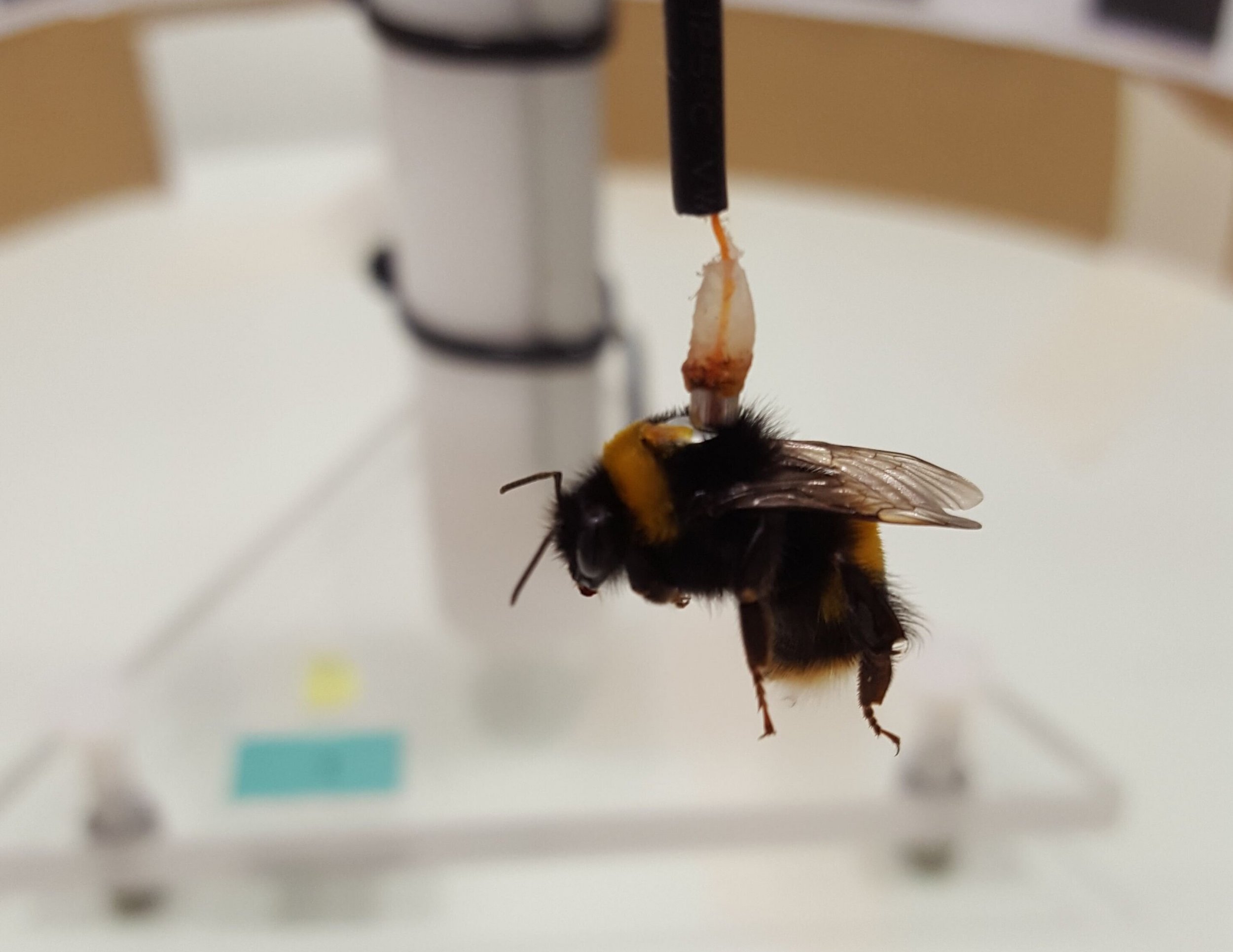
The use of neonicotinoids—a common class of pesticides—has increasingly been linked to negative effects on bees by a number of scientific studies in recent times.
Now, a team of researchers from Imperial College London has found that bees which are exposed to neonicotinoids—or "neonics" for short—are only capable of flying a third of the distance that unexposed bees could manage, according to a study published in the journal Ecology and Evolution.
Such a reduction in flight ability could have a significant impact on the way bees forage for food, potentially meaning that colonies could go hungry, while also negatively affecting the pollination services that the insects provide. This is especially concerning given the key role that bee pollination plays in the growing of crops and the functioning of ecosystems.
Previous research into the impact of neonics on bees has uncovered associations with reduced foraging efficiency and homing ability. According to the authors of the latest study, one explanation for these effects could be that elements of flight are being affected. However, this idea has scarcely been tested, with the exception of a couple of honeybee studies.
To address this lack of knowledge, the researchers used a "flight mill"—a kind of treadmill for flying bees—to investigate how exposure to realistic doses of a neonicotinoid called imidacloprid affected the performance of a wild bumblebee known as Bombus terrestris audax.
The flight mill is essentially a spinning apparatus with long arms connected to magnets. The researchers fastened small metal discs to the bees' backs, enabling them to temporarily attach the insects to the magnetic arm of the flight mill. The bees then flew in circles and the team were able to accurately measure how far and how fast they flew.
The results of these tests showed that the bees that were exposed to imidacloprid flew for shorter distances and less time than the unexposed bees. And using this data, the researchers estimated such effects could reduce the area in which colonies can forage for food by up to 80 percent.
"Previous studies from our group and others have shown that bee foragers exposed to neonicotinoid pesticides bring back less food to the colony," Richard Gill, lead author of the study from Imperial's Department of Life Sciences, said in a statement. "Our study on flight performance under pesticide exposure provides a potential mechanism to explain these findings."
"The negative effects of pesticide exposure on flight endurance have the potential to reduce the area that colonies can forage for food," he said. "Exposed foraging bees may find themselves unable to reach previously accessible resources, or incapable of returning to the nest following exposure to contaminated flowers. Not only could this reduce the abundance, diversity, and nutritional quality of food available to a colony affecting its development, but it could also limit the pollination service bees provide."
Interestingly, the experiment also revealed that exposed bees appeared to enter a hyperactive state in which they flew at a significantly higher speed over the first three-quarters of a kilometer of flight, potentially tiring themselves out faster than the unexposed bees.
"Neonicotinoids are similar to nicotine in the way they stimulate neurons, and so a 'rush' or hyperactive burst of activity does make sense," Daniel Kenna, first author of the study from the Department of Life Sciences, said in the statement. "However, our results suggest there may be a cost to this initial rapid flight, potentially through increased energy expenditure or a lack of motivation, in the form of reduced flight endurance."
The researchers said that the latest findings could have important implications for our understanding of bee colonies at a time when the insects face numerous threats, including the increasing spread of agricultural land.
"Resultant fragmentation and loss of suitable foraging habitats, combined with pesticide exposure, may increase demands on foraging, specifically the ability to collect or reach sufficient resources under such stress," the authors wrote in the study. "Understanding effects that pesticides have on flight performance is therefore vital if we are to assess colony success in these changing landscapes."
In response to the concerns over neonicotinoid use, the European Union has banned the use of certain types, and several states in the U.S. have followed suit by imposing restrictions.
As the use of neonics has become more restricted, manufacturers have developed pesticides that are considered "bee safe." However, these substances could potentially cause problems of their own.
In fact, a recent study published in the journal Proceedings of the Royal Society B: Biological Sciences found that one compound known as flupyradifurone (FPF)—which is marketed as "bee safe"—may actually cause harm to bees when a common fungicide is also present.
Uncommon Knowledge
Newsweek is committed to challenging conventional wisdom and finding connections in the search for common ground.
Newsweek is committed to challenging conventional wisdom and finding connections in the search for common ground.
About the writer
Aristos is a Newsweek science reporter with the London, U.K., bureau. He reports on science and health topics, including; animal, ... Read more





